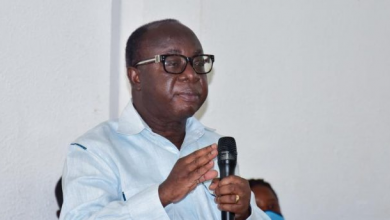TECH: TRUMPS’S TARIFFS PUTS APPLE’S GOLDEN GOOSE AT RISK
The iPhone launch is the most important date in Apple’s calendar. At least it would be, in a normal year. In 2019, it’s 15 December that matters most for America’s richest company.

That’s when Donald Trump has threatened to impose a sweeping new round of trade tariffs against imports from China. According to analysis by Reuters, it would mean 92% of hardware sold by Apple would face levies.
Apple is of course desperate to not let this happen, and has been lobbying hard to be granted exemptions. That effort has been somewhat successful, and it is the reason why the company has been relatively unscathed until now: only this month did tariffs have an impact on “major” Apple products, the Apple Watch and AirPods.

Those products are important, but not the golden goose – wearable devices make up less than 9% of Apple’s total sales. The iPhone, however, represents 55.6% of Apple’s business. While the importance of the iPhone has been declining due to a drop in smartphone sales (in general) around the world, it’s still by far the most important device Apple makes.
Two years ago Apple made a bold (and ridiculed, at first) decision to fatten its goose. It increased the price of the iPhone, breaking the $1,000 barrier for the first time. Consumers went for it, and Apple was able to offset declining sales of the device by instead making considerably more on each one.
Waiting game
And that’s what the tariffs put at risk – those healthy profit margins. If the tariffs are indeed imposed in December, it could mean several outcomes – none of which Apple will be particularly keen on, explained Alberto Cavallo, an associate professor at Harvard Business School.
“Most people assume that we will see the tariffs reflected in consumer prices,” he said.
“That’s not necessarily the case. Companies facing higher costs can choose to absorb those costs.”
And that’s what most financial analysts expect Apple to do, keeping this year’s crop of iPhones set at the same prices as last year ($749, $999 and $1,099). Should the tariffs arrived as threatened, Apple will just have to suck it up.
Then it becomes a waiting game: how long will this trade war and its tariffs last? Could the tariffs get worse?
Apple, it was reported earlier this year, is investigating ways it can move production out of China, avoiding the tariffs altogether. It already makes devices in places such as India and Brazil, but that’s typically to handle local demand in those countries – not making devices to send overseas. Ramping up these operations will take a long time, Prof Cavallo said.
“I think it’s important for consumers to understand it’s not an automatic thing. It’s not exactly like flicking a switch.”
President Trump would tell you the way to handle this would be to move manufacturing back to the USA – “America First”, and all that. But the costs of doing that could dwarf the impact of the tariffs in the first place. It’s not just a case of building a factory, but training a brand new workforce of talented fingers, fingers that will require higher wages and better conditions.
The manufacturing of Apple products directly and indirectly accounts for around 3 million jobs in China. For that reason, Prof Cavallo said, one other possible scenario might be that Apple’s suppliers might offer a discount at their end in order to keep hold of that business.
Fragility
Apple will also continue to develop the side of its business that won’t be affected by import tariffs.



